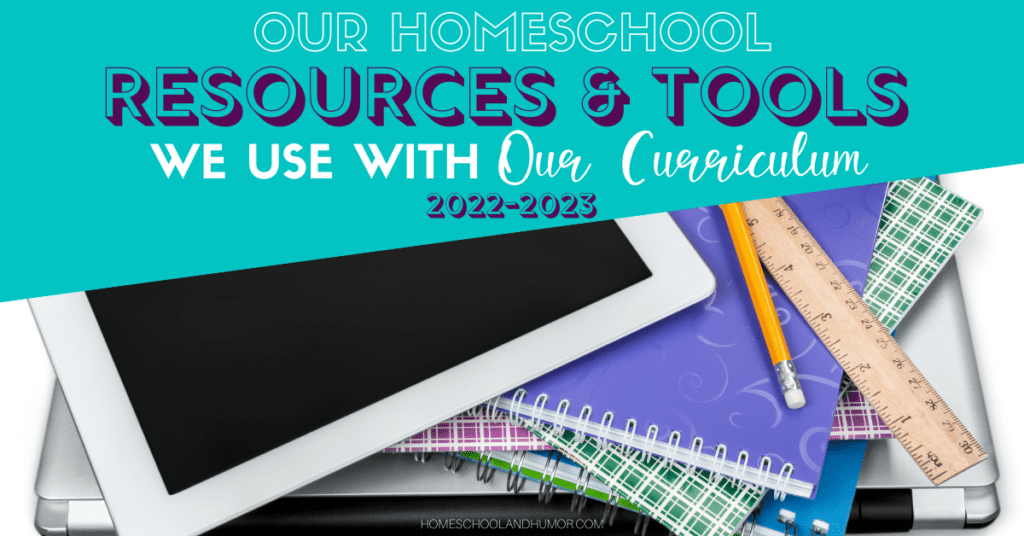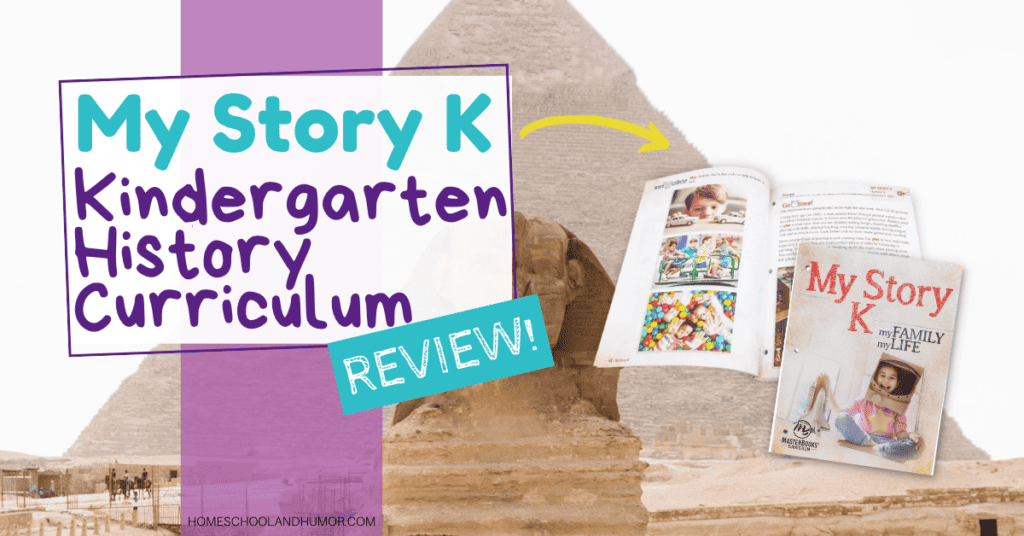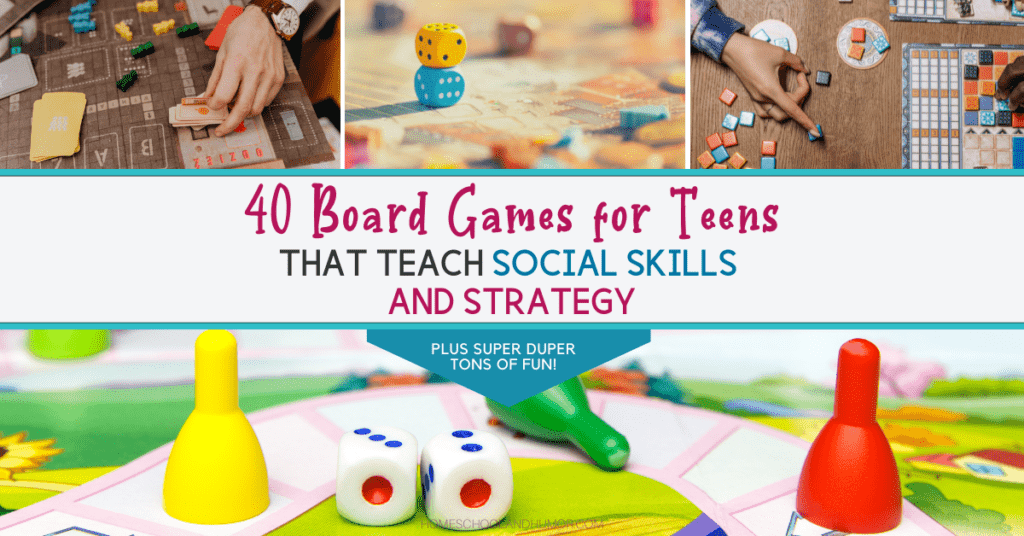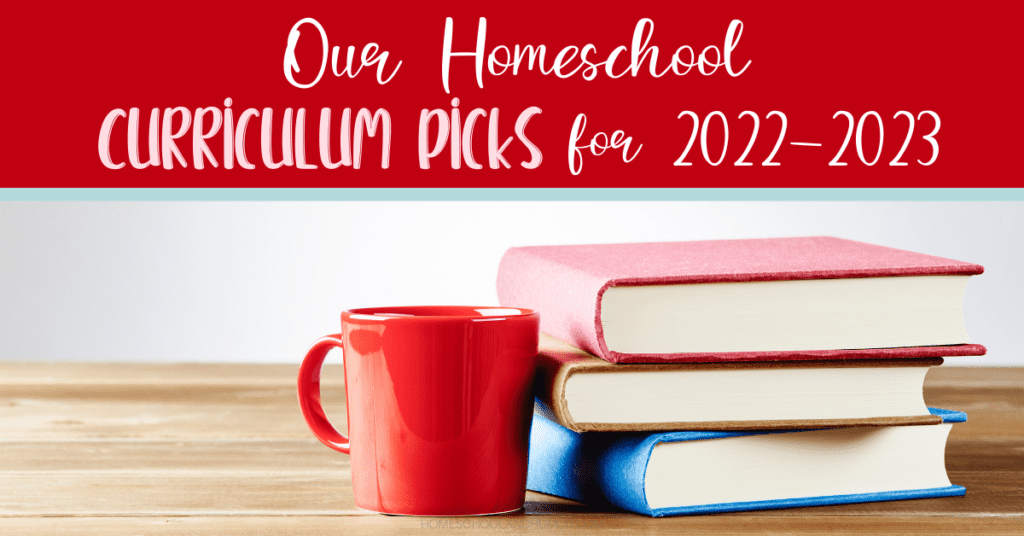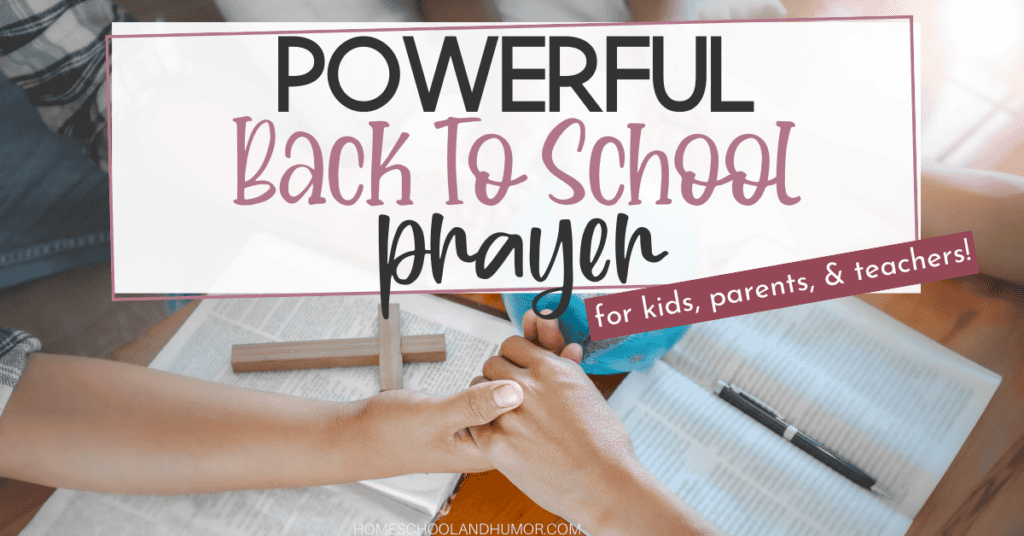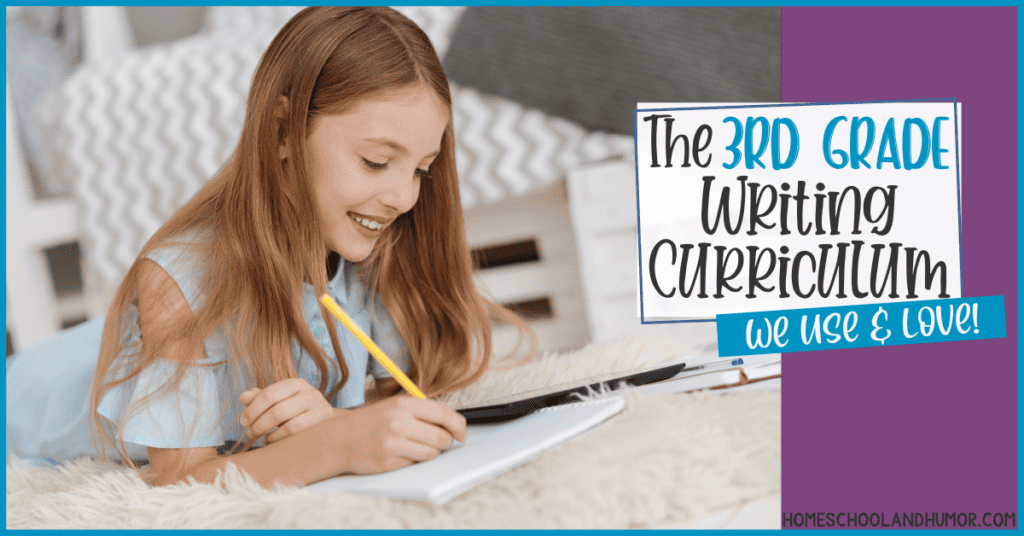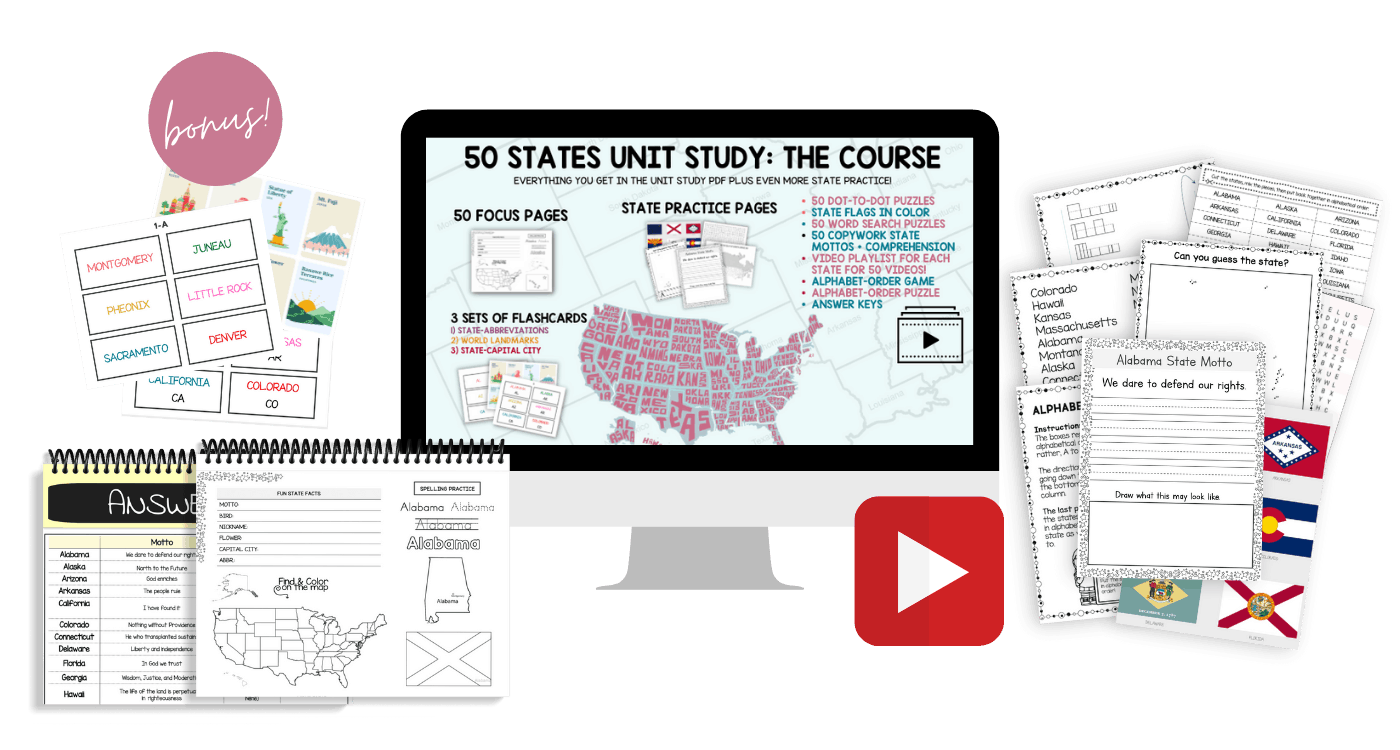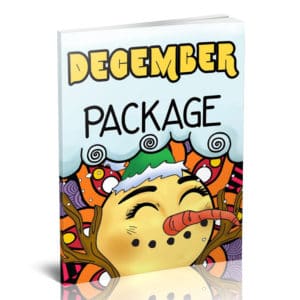Are you looking for some new resources and tools to use alongside your homeschool curriculum for the upcoming school year? Even though you’ve gotten your curriculum picked out, there are still a few more items you may need to get in addition to your curriculum to fill in the gaps. I’ve compiled a list of my favorites that we love and use in my own home!
We have a few permanent tools and resources we use alongside our curriculums. I found that these tools/resources are what keep us stable and organized and moving forward in our homeschool days. And making our homeschool a lot easier to manage!
Do you want to know our curriculum picks for 2022-2023? Click here!
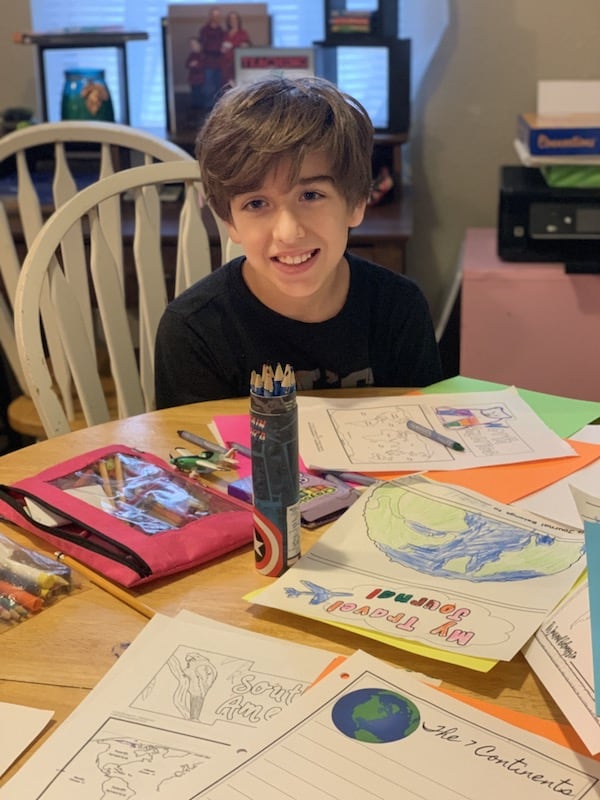
ˆDisclaimer: This post contains affiliate links for your convenience. See our privacy policy here.
We have a few permanent tools and resources we use alongside our curriculums. I found that these tools/resources are what keep us stable and organized and moving forward in our homeschool days. And making our homeschool a lot easier to manage!
Quick Navigation
Interactive Notebooks and Composition Notebooks
We *try* to utilize a lot of interactive notebooks in our curriculum! I either buy packs or I make my own! And I add them into our curriculums or it’s the curriculum itself for the time being. ‘
For example, I will use a history curriculum. And I will use our interactive notebooks as an additional hands-on approach as we discuss it!
In addition to history, we use interactive notebooks to study poetry, understand literature, writing, informational texts and nonfiction, even math!
And I use composition notebooks for them to take math notes in as I teach them a lesson, inside their interactive notebook.
We have tons of composition notebooks over the years. And we rarely use up an entire composition notebook in a single year.
I use ONE composition notebook for ALL language arts subjects. Not one composition notebook for each one. I divide the notebook with dividers.
I also use ONE composition notebook for ALL of history, but I also divide it up into dividers according to the era/what we’re learning. In fact, we won’t use a new composition notebook beginning for the new year. We’ll just keep adding onto the history one we’ve been using until it’s filled up. And once it’s filled up, well, then I guess we’ll just open up a new one!
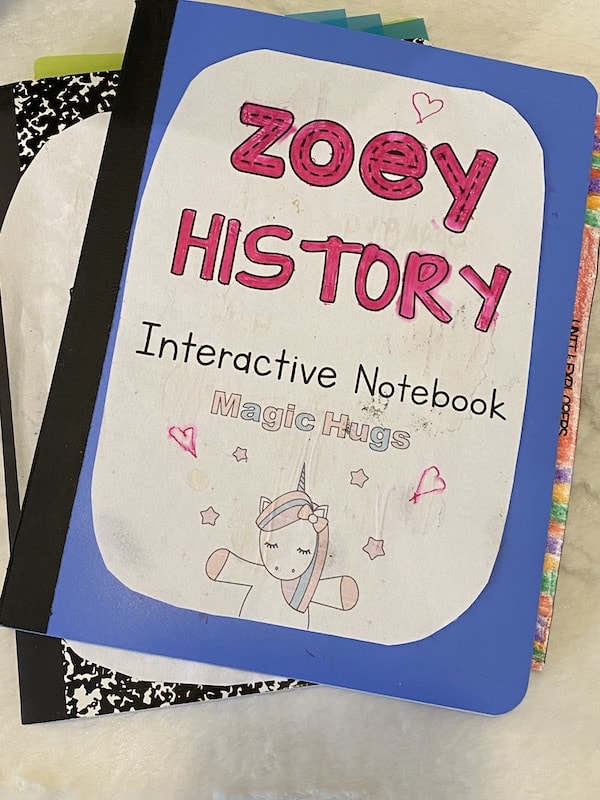
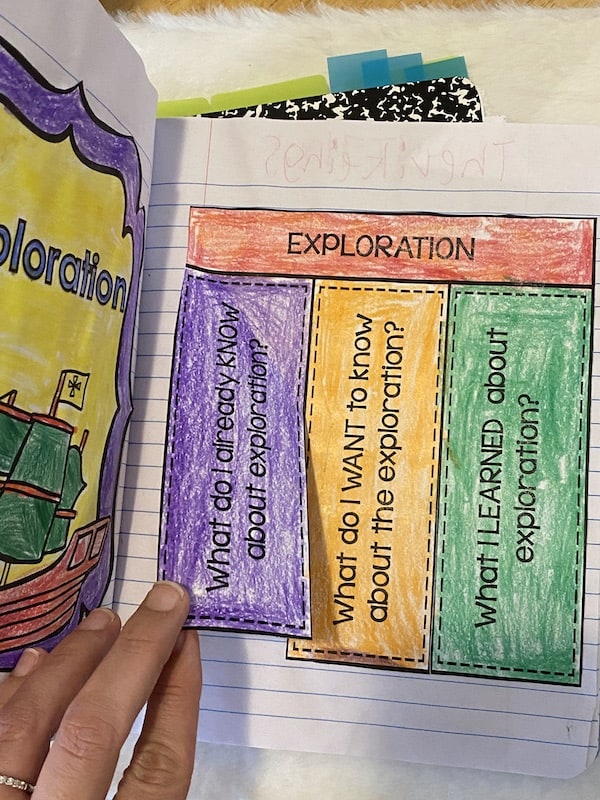
I use ONE composition notebook for spelling and vocabulary together, along with ROOT words. This has just started so I’m not sure how this will go for this year though. We’ll see. We have a workbook for Root Words now from Critical Thinking Co. that we really like already, so I’m not sure if I’ll be doing INB (interactive notebooks) to supplement it.
I probably should, though, because I find that my kids aren’t retaining that information as well as I like. But then again, later on, I’ll notice how quick they are to know something. So it’s like, when I put them on the spot about what XYZ is they freak out. But in daily conversation they’re spot on. So I’ll have to test this theory a little more this year.
Books
I also write a list of books we’ll read for the year once I know what our subjects are going to cover that year. The reason being is because I want things to line up as close as possible, especially since I’m not going an entire school-in-a-box curriculum and eclectically creating my own.
How do I know what to read for each subject or grade level? Easy! I use the resource called Books To Build On by Ed Hirsch, Jr. who is part of the Core Knowledge Series (my FAVORITE way to plan out my homeschool with their scope and sequence!). This books tells you alllll the books you can read for a subject. VERY handy.
In addition, to Books To Build On, I also use Rebecca Rupp’s Home Learning Year by Year to assist in planning out the lessons and knowing what to teach as well as grabbing specific books for those lessons.
I’ve been using these two books for years and it’s made my homeschool planning a heck of a whole lot easier!!
From those two resources, I have a good idea what we’ll read for the year. But I also glean ideas from a few online book lists as well as Beautiful Feet’s history living book list we like to use too! And there are a few book recommendations in all our curriculums as well, which I will do a glance through from time to time, depending on the concept.
Moving on, the type of books we will read for the year are:
Read alouds
I like to use history for our bigger book read alouds if possible. If not, we’ll pick a classic books that I want them to know to read together throughout the week. If we don’t read it during the daytime, we read it at night before bedtime which seems to really work itself out pretty well to get that book read and enjoyed. I love it when we read together. It sparks tons of cool conversations and questions during and even after – and even loooong after – the book has been finished.
Independent Readers
My kids read books in their own independent time. And since this year I want to strongly focus on reading and writing, specifically, we are going to implement each type of reading this year, which includes independent readers. These readers aren’t picture books or short, thin books. These are chapter books, and they’ll need to do work on them throughout. I try to get books that have a Lit Kit with them from either Abeka or from our worksheet resource called Super Teacher Worksheets.
Living Books
I love, love, LOVE reading living books for different subjects, namely history but science works too! Really, any subject works. Beautiful Feet has a list we like to follow for history living books, and I also have a list of 100 living books for history made that you can download from that blog post for free.
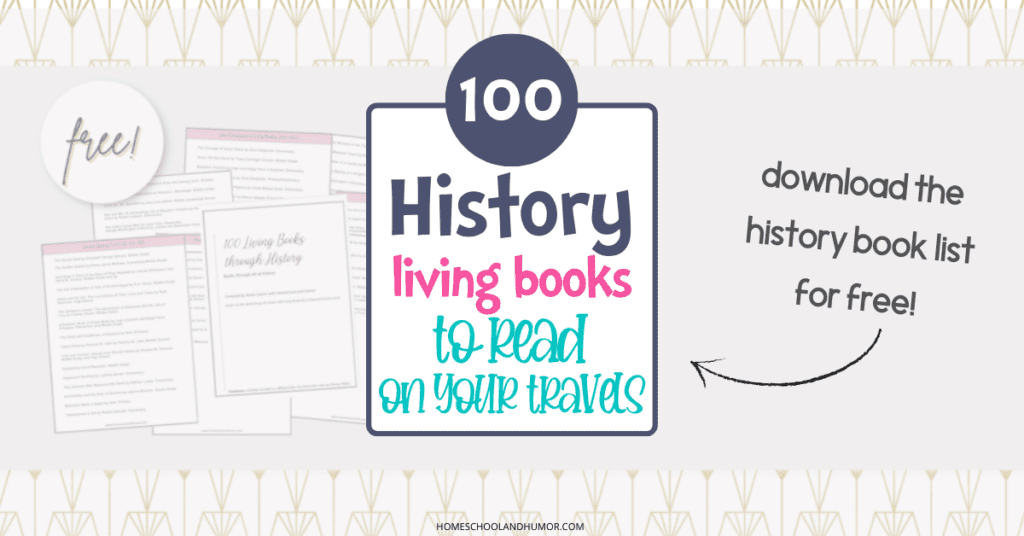
We learn about a history era or about someone in history or an event, etc, and then we’ll read a living book about it. It really brings the story to life and helps the kids understand – and retain – the time period and what happened.
History is just like one huge story, we it’s our favorite subject. If history is not your favorite subject, and if you aren’t treating it like one fun exciting story, try doing that this year for your kids to get excited about it!
Lesson Books
And, of course, there are some books we read that are the short, thin books or picture books we crack open for certain lessons. These are studied for a long time at all, usually used just for that lesson. I like using picture books too because if though Daniel and Zoey are older, they still enjoy them! Plus, they’re perfect for Scout to be part of the lesson too!
Of all these books, I’m still planning on what to exactly read for the read. But I have a pretty good idea. I know we’ll read X amount of read alouds and independent readers. From there, I’ll just look through the lessons and make note of the books we will or can read for those lessons so by the time it comes up, it’s there for me! (I do this type of planning term to term and not all in one go for the whole year. Sometimes I’ve even done it month to month, but I found the planning term to term is much better and less time-consuming, or at least that’s how it feels.)
Resource Sites
I already mentioned a few, but we have a few dedicated memberships we are a part of to pull worksheets, ideas, activities, and all sorts of stuff we may need or that I may need inspiration from or an activity for a lesson.
- Super Teacher Worksheets
- My Teaching Library
- Teachers Pay Teachers
- HelpTeaching
- Math Shed (with our spelling)
- BrainPop
- YouTube
- some years we’ve had SchoolhouseTeachers
There may be one or two more but those are mostly it. And I don’t have memberships for My Teaching Library nor SchoolhouseTeachers this year, but if I need additional resources, I’ll consider renewing my membership with them. You can learn all about SchoolhouseTeachers here. And you can read the review I wrote about My Teaching Library.
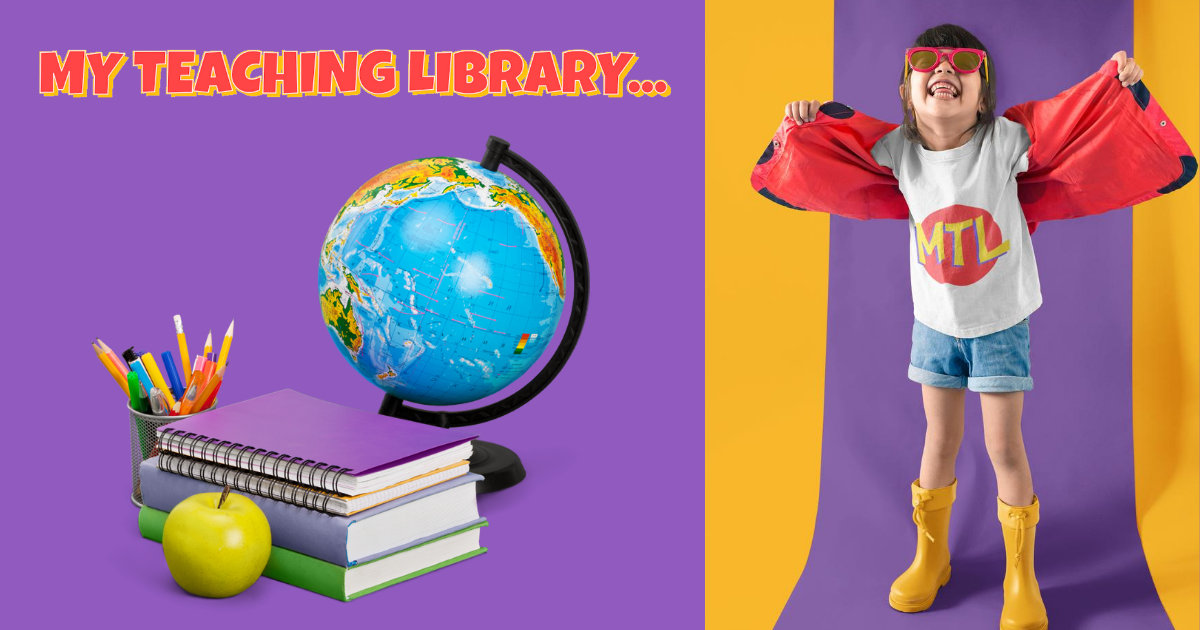
For Scout, his learning apps on his iPad are:
- Reading Eggs – the best EVER!!
- Caterpillar Play School
- codeSPARK
- Sago Mini World: Kids Games {{Editor’s Choice}}
- Sago Mini School (Kids 2-5) {{Editor’s Choice}}
You’ll find quite a few Sago Mini apps, but these two are the ones we like.
But by far, Reading Eggs and Caterpillar Play School helped Scout learn his numbers, colors, letters, shapes, and even how to spell his name!
You can read this review on Reading Eggs to learn all about it! Actually, to learn just a piece about it because there is just so much stuff pumped into that app! And you can print out worksheets too! And do math with it and phonics! Definitely worth the annual subscription (or monthly, but annual usually saves $).
Homeschool Planner
Homeschool Planet is my digital planner of choice when planning for my homeschool! It’s so easy and versatile to put all your family info, curriculum, and everything inside. I’ve tried other planners, but Homeschool Planet fit the ticket for me.

Now their database may look a bit outdated, admittedly. But that’s as far as the cons go! Seriously, anything you NEED from a digital planner is right inside Homeschool Planet!
I DEFINITELY use Google Drive to store my digital files, along with my laptop files. Though in additional to G Drive, I have used (and still find myself using) from time to time Google Classroom. It’s a great way to keep up with your resources and lessons, just not as robust as Homeschool Planet!
This particular year, however, I decided to get off the screen since I’m on my laptop so much more these days anyway, and do a paper planner!
I used Debra Bell’s The Ultimate Homeschool Planner during my first 2 years of homeschooling and I absolutely loved it. It was my answer to a well-structured homeschool, especially that first year when everything to me was all but smooth!

This year, though, I’m going in a different direction. I’m using Mardel’s A Simple Plan planner this year. And luckily, it was in stock! It’s usually OUT OF STOCK at this point in time, so I was super excited it was still available. Then I thought through my approach to organizing our homeschool plans, and I decided to I wanted to do a spiral/paper/physical planner this time!
I have used other planners in the past that I like, some I haven’t, and I’m sure I’ll write a post about it at some time. But this particular post isn’t about awesome things you can do for your homeschool…it’s about what we’re using for our homeschool for 2022-23! And we’re using Mardel’s dated homeschool planner!
I think when the kids get in high school, I’ll utilize a student planner for them to learn more accountability and independence. But for now, we use binders that I put together for them. I’m planning their stuff right now so until the day when I can just tell them to “read chapter 6 and then do the questions, spelling, etc”, and they do it, I’ll do the planning!
I do have Trello Boards dedicated to Homeschooling in which I’ve mapped out their Scope and Sequence for when I planned out their curriculum and concepts. I refer to this throughout the year too. (But this happened before I decided on the curriculum! I update it each year!)
Lesson Organizers
In addition to a planner, I like to keep a Mom Binder of things. These are things similar to the planner, but more specific to the school year, like syllabuses, tables of content, copies of stuff, notes, lesson plans, that kind of stuff.
Then, I use a wall hanger. I put our lessons in this wall hanger for the week, which I found was a lot more doable than putting lessons in a file box. I still have the file box, but now I put completed lessons and tests in there, things we’ve already done. I will be our week’s lesson in the hanger file along with the lesson books if we’re going to need them, spelling lists, notes, interactive notebook templates, and so on.
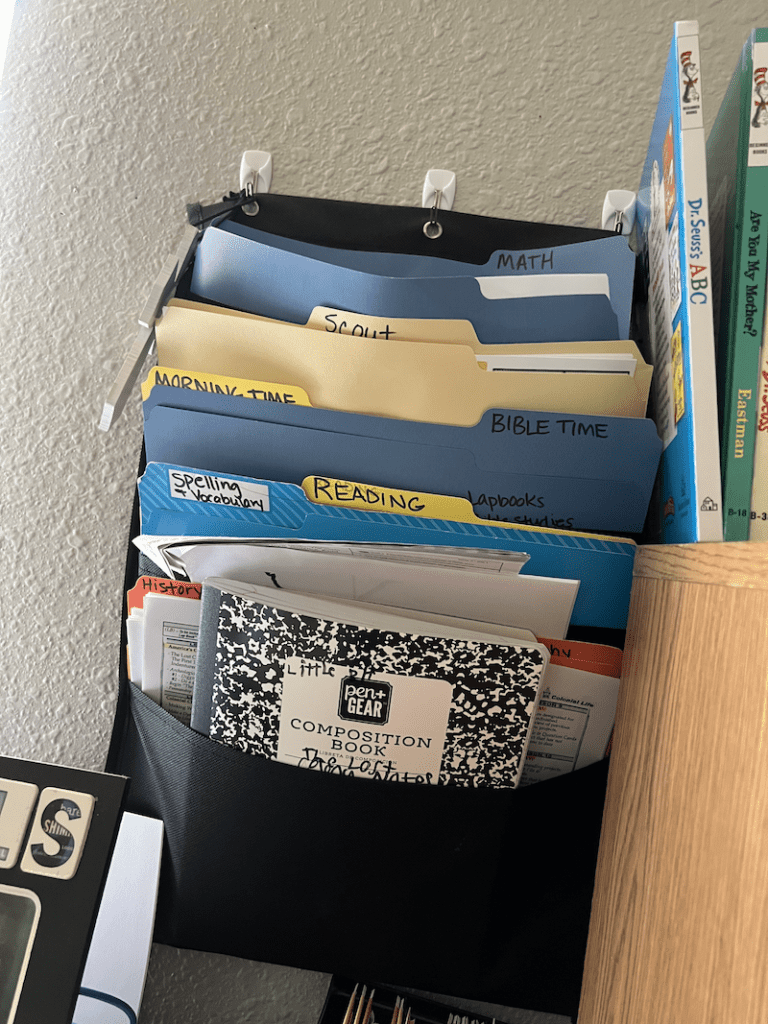
As I mentioned, each child has their own sets of composition notebooks for notes or interactive notebooking, but each USUALLY has their own binder, too, to put current lessons in.
I’ve organized the binders a few different ways over the years:
- divided by subject, or
- divided by day of the week
If I use the subject way, I put multiple lessons in each one, which kind of moots the whole point of the wall hanger. And I have to put the lessons in there, like I said, which takes time.
If I use the day of the week week, I refill the binders in the beginning of each week and put their lessons in the proper days where they go. The pickle with this way, though, is that we may need to push back a day, or we skip a day, or we don’t get to something. Or we need to spend longer on something. Also, many worksheets have Day 1 on the front side and Day 2 on the backside, so the perfectionist in me finds that irritating. I’ve even gone so far as to make copies of Day 2 just so I can put it in the correct day instead of having to remember it’s on the back of Day 1 and freak out thinking I lost it!
However, I really like the day of the week way – it’s efficient – but it’s not flexible enough. It’s not as flexible as the subject dividers. But the subject dividers aren’t really necessary, then, unless I just want them to have a few lessons for each subject in their binders. This is probably the best way.
As you can see, I’ve yet to decide this part.
However, I may just forego their binders altogether this year, for the first time, and see how that pans out. I mean, they have their composition notebooks, and we don’t use loose leaf paper right now.
But to be honest, I’ll probably succumb to the binders anyway because I like organization, and just put the week’s lessons in each divider by subject. So Mon-Friday’s lessons in divider 1, and so on. I can still use the wall hanger for books, lists, special things we’ll use that week, and so on.
Yes. I think I’ll do that! (Thanks for helping me out!)
And that’s about it for resources we use in addition to our curriculum. Of course, we also utilize Google and we do field trips and we do hands-on projects. But mostly, that’s about it! I know it seems like a lot, but I don’t use ALL of these at the same time! The time comes when I DO need these resources and then at that point, we do it!
For example, when we have extra time for math, I have them do Math Shed on their apps. (This is exactly what we used to do when Daniel and Zoey did Reading Eggs but they completed all of it! So they don’t use it anymore, only Scout uses it.)
- 111 Best All-Time Middle School Movies List (In Categories!) - April 26, 2024
- Top 16 Indoor Games for Teens That Won’t Turn Your House into a War Zone - January 29, 2024
- Free Crafty Printable Christmas Countdown Calendars For Kids - December 17, 2023

